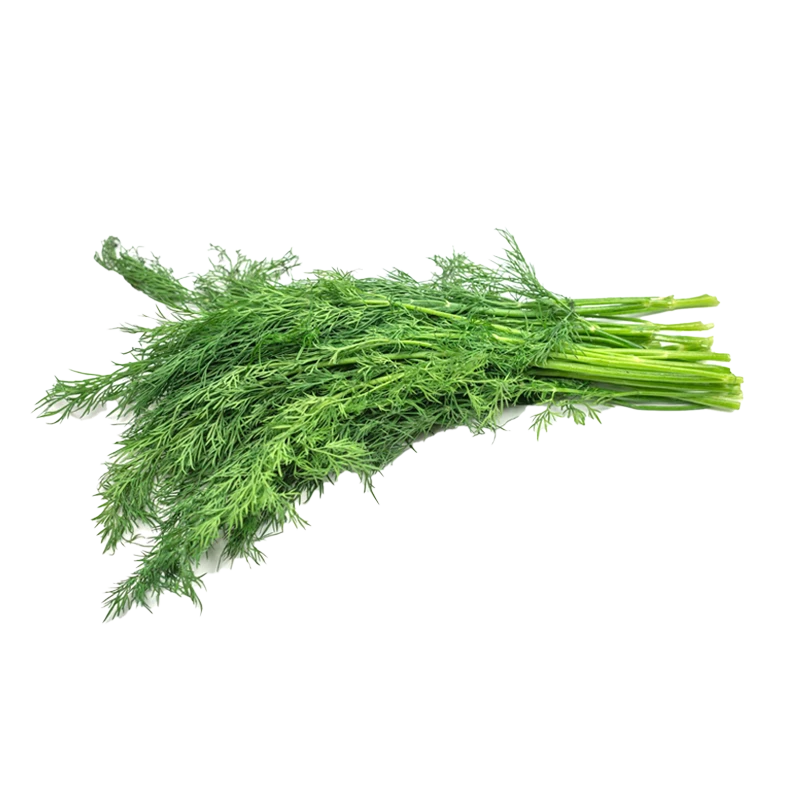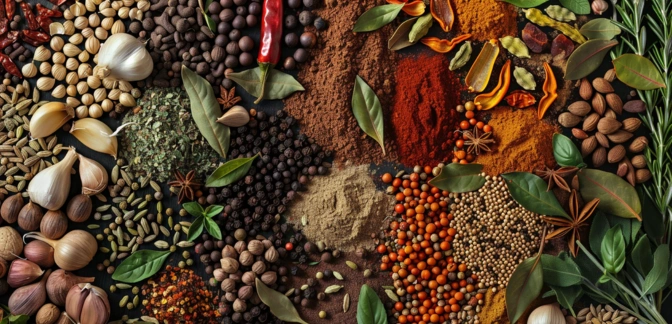Dill — Nutrients, Health Benefits, And Shopping Tips

Written by Listonic Team
Last update on September 6, 2024
Nutrients
Nutrition facts
Amount per 100 g
Calories
🔥 43 kcal
| Nutrition per: 100 g | Value | % Daily Value* |
|---|---|---|
| Carbs | 7 g | 2.55% |
| Fiber | 2 g | 7.14% |
| Sugars | 0 g | - |
| Glycemic Index | 15 | - |
| Protein | 4 g | 8% |
| Sodium | 61 mg | 2.65% |
| Total Fat | 1 g | 1.28% |
*The % of Daily Value (DV) tells you how much a nutrient in a serving of food contributes to a daily diet. 2,000 calories a day is used for general nutrition advice.
15
🟢 Low Glycemic Index
1 g
🥕 Low Fat Content
Key takeaways
Health benefits
- Rich in antioxidants, such as flavonoids and polyphenols, which help protect the body from free radicals and reduce inflammation.
- Supports digestive health by stimulating the production of digestive enzymes and reducing symptoms of indigestion and bloating.
- Contains essential vitamins and minerals such as Vitamin A, Vitamin C, and calcium, which support overall health and well-being.
- Antimicrobial properties can help fight off infections and improve overall health.
- Supports bone health due to its calcium content, which is important for maintaining strong bones.
Health risks
- Potential allergic reactions in some individuals, particularly those allergic to plants in the Apiaceae family, causing symptoms like itching, swelling, or difficulty breathing.
- Risk of digestive discomfort such as gas or bloating when consumed in large quantities, especially in those with sensitive stomachs.
- Potential for contamination with harmful bacteria or pesticides if dill is not properly washed or sourced from a reputable supplier.
- Interaction with certain medications particularly blood thinners, as dill contains vitamin K, which can affect blood clotting.
How to choose dill
Fresh dill should boast vibrant green fronds that are feathery and delicate to the touch. The aroma should be grassy and slightly tangy. Inspect the stems; they should be firm and not slimy.
Omit any dill that shows signs of wilting or yellowing, which indicate it’s past its best. Properly fresh dill will be aromatic and add a burst of flavor to salads, dips, and fish dishes.

How to store dill
Fresh dill should be stored in the refrigerator. Wrap it in a damp paper towel and place in a plastic bag to keep it fresh. Properly stored, dill can last up to a week.
Too much moisture can make dill slimy, so it’s best not to wash it before storage. It’s also advisable to keep it away from other strong-smelling herbs. Allowing some airflow helps maintain its freshness.
✅ Extra Tip
How long does it last?
Dill can last for 1-2 weeks in the refrigerator when stored in a plastic bag with a paper towel to absorb excess moisture. For longer storage, dill can be dried and kept for up to 6 months in an airtight container.
What to do with leftovers?
Leftover dill can be used in a variety of fresh and flavorful dishes. In the kitchen, dill adds a bright, herbal flavor to dishes such as salads, soups, sauces, and seafood. Fresh dill can also be used to flavor pickles or mixed into yogurt or sour cream to create a tangy dip or dressing.
Beyond cooking, dill has several other uses. It can be used as an herbal remedy; dill tea, made from the seeds or leaves, is traditionally used to help aid digestion and soothe an upset stomach. Dill is also known for its insect-repellent properties, so placing fresh dill sprigs around your home or garden can help keep pests at bay. Additionally, fresh dill can be added to homemade potpourri or sachets to provide a refreshing scent to closets, drawers, or rooms.
👨⚕️️ Medical disclaimer
Discover products from other categories
Listonic Team
Fact-checked
Our editorial team checked this article to make sure it was accurate at the time of publishing it.
Get the top-rated shopping list app on your phone!







